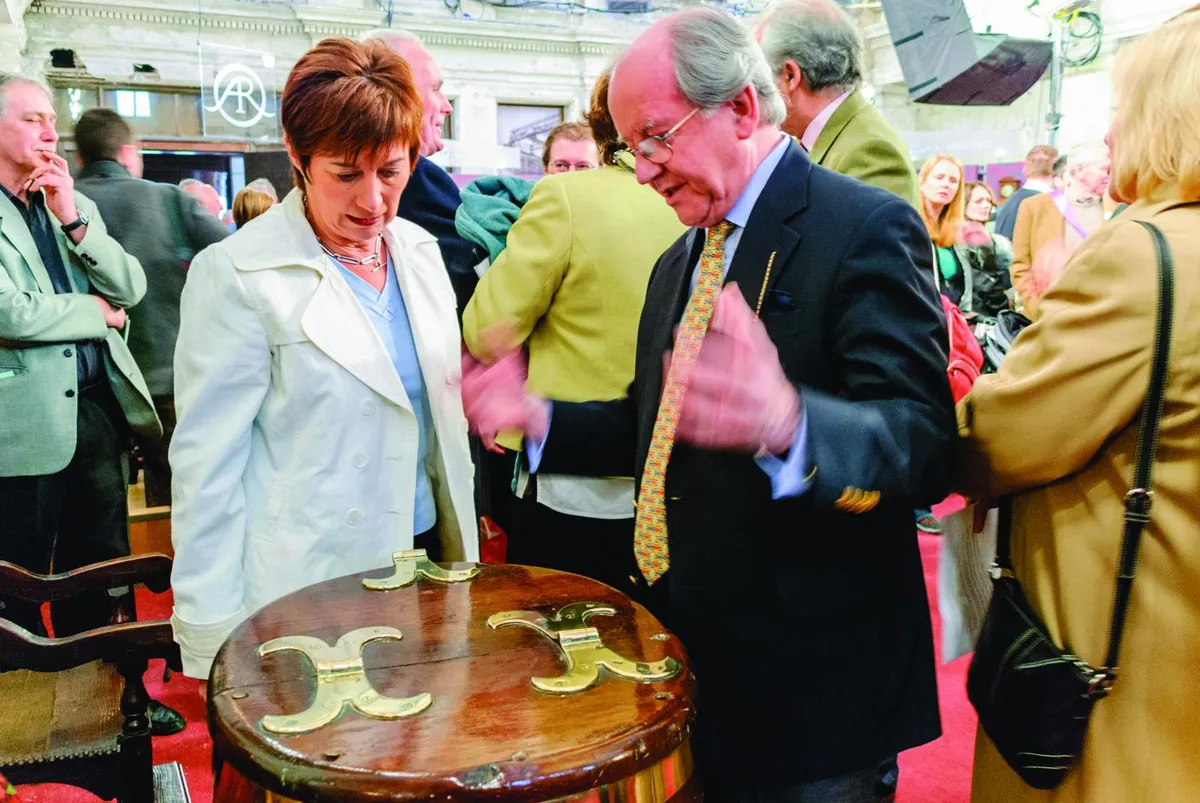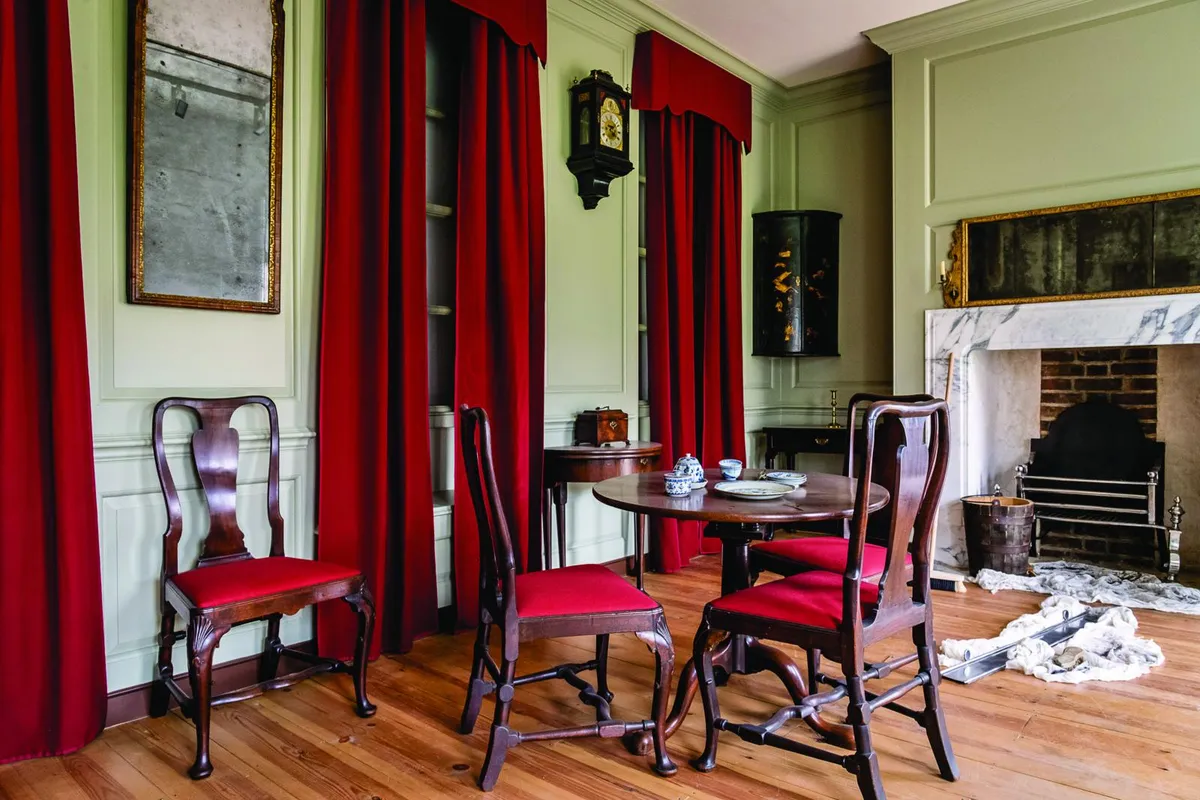John Bly has a special place in the world of antiques. He’s been deeply charmed by fine furniture and decorative arts since he was a boy in the 1940s, and at 82 has endless stories to tell about his life in this curious, fascinating industry. Born in 1939, months before the outbreak of the Second World War, John’s earliest memories are of his wartime childhood; growing up in his family’s antiques shop in Tring, Hertfordshire, where his grandfather started the business in 1891.
‘My father took over the business and, when he went off to fight in the war, my mother and grandmother ran the shop. They would buy and sell pieces people would bring to them from London during the Blitz. Every night they would move stock into the cellar. While they wrapped and unwrapped paperweights, tea caddies, porcelain and china, they would talk about each item. I would sit and listen to them chatting. That was my education – listening to them while I sat on my grandmother’s knee.’
John left school at 17 and his father found him a job in the basements of Sotheby’s on New Bond Street. ‘I was absolutely captivated by Sotheby’s,’ he says. ‘I was a numberer in the silver department. I ended up working on all sales – jewellery, silver, enamels, ephemera, musical instruments, ceramics, Japanese works of art. It was 1957 and I earned £4.10 a week. You could buy a box of netsukes for a fiver then. The amount of goods was amazing. I didn’t have to study anything; it all just floated into you.’

As well as cataloguing, John would take items to locations around London. ‘I would take pieces to Avery Row to be photographed. I would go to Hampstead to pick up a case of jewels and silver waiting for me in a porch. I would travel on the bus to Hatton Garden with a bag of diamonds. It was huge fun.’
After four years at Sotheby’s, in 1961 John returned to Tring and joined the family business, travelling round the country buying, selling and working with restorers. ‘One of my first buys was a dining table and a set of chairs I bought at a farm for £1,700 – the farmer asked me if I wanted to buy his farm for the same money. While the furniture might have doubled in price, goodness knows what that farm is worth now,’ he says. ‘My father sold a lot of pieces to museums, including a Robert Adam cabinet from Kimbolton Castle to the V&A. I remember it arriving on the back of a van with tarpaulin over it. It is one of the most famous pieces of English furniture in the world.’
As well as dealing in antiques, John began passing on his considerable knowledge to others, through lectures, books (he published his first book in 1968), and eventually television. ‘In 1970 I was approached by Thames Television to work on a show looking at antiques. I then ended up on Anglia Television doing a five-minute spot on antiques on a show called Heirloom.’
The Antiques Roadshow began in 1979, presented by antiques expert Arthur Negus. In the second year of the show, the crew was filming in Ely and needed a miscellaneous expert – they called in John, who was working close by in Norwich at the time. ‘Arthur was a great coach,’ says John. ‘We ended up doing the Arthur Negus Enjoys series together. I always think of the Antiques Roadshow as being the greatest travelling encyclopaedia. The combined knowledge is incredible. It was a great privilege to be part of that.’

John can reel off some major achievements from his career in antiques – as well as appearing on television for 40 years, he has written 14 books, lectured around the world, become a Liveryman of The Worshipful Company of Goldsmiths, a Fellow of the Royal Society of the Arts, and is a past chairman of the British Antique Dealers’ Association (BADA). He has been involved in numerous charity events, and can also claim to be Honorary Citizen of the City of New Orleans as well as a Tennessee Squire with a small piece of land.
The Bly family business is still going strong, too, having just marked its 130th anniversary. John’s son, James, joined him 25 years ago and the business has an international following today. Last year they founded the Studio Bly International arm, producing bespoke pieces of furniture by top artisans.
But, for John, it always comes back to the story. ‘There is so much to learn and I’m still learning,’ he says. ‘When we find a piece of furniture for the shop, I love the research we do; the joy of finding out more about it. Everything you look at has a story.’ It comes as little surprise that his favourite places are the British section of the Victoria & Albert Museum, and The Museum of the Home: ‘It’s so wonderful to walk from room to room and see each period, see the furniture changing shape.’

Indeed, one of John’s greatest loves is social history. ‘Artefacts reflect the way we live,’ he says. ‘When I look at a chair and it has a certain shape, I know it is of a particular period. Chairs had wide seats in the 1740s due to the big skirts and frock coats people wore. In the 1780s we get more dainty chairs, due to climate change – women were able to wear fashionable Empire dresses because it was so hot.’

He adds: ‘I love dumb waiters. In the 1740s, people used to get so drunk they would be indiscreet in front of their staff, so they adopted service à la russe, where food and drink would be plonked on the table by staff, and diners would serve themselves. From that time, there came wine coasters and labels, decanters, cheese coasters, gravy boats and argyles (named after the 5th Duke of Argyll, who was fed up one day that his gravy was cold by the time it reached the table). Three-tiered serving tables were brought in with napery and cutlery on – they came to be known as dumb waiters. Everything we do is linked to a need of our time.’